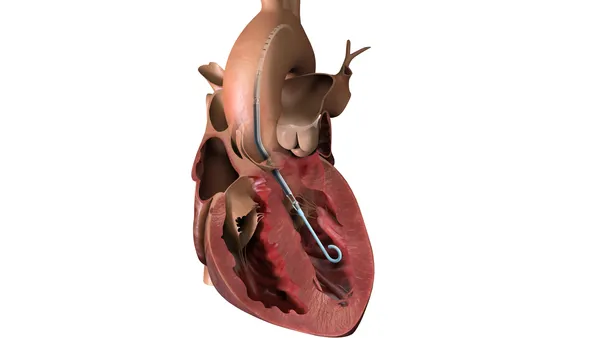Dive Brief:
- The Medical Device Coordination Group task force released guidance on the changes that in-vitro diagnostic manufacturers can make to their products under the transitional provisions of the new regulation.
- Manufacturers can place in-vitro diagnostics on the market with certificates issued under the old directive for a time after the May 26 date of application of the In Vitro Diagnostic Regulation (IVDR), provided they do not make significant changes to the design or intended purpose of the tests. The guidance sheds light on what constitutes a “significant” change.
- The group has created a series of flow charts to help diagnostics manufacturers determine if a change is significant and, as such, will require the device to be certified by a notified body under IVDR to stay on the market.
Dive Insight:
When the European Union agreed to the staggered rollout of IVDR in December, MedTech Europe identified guidance on significant changes and the addition of notified body capacity as the two issues that required “urgent and continued attention” from the authorities. If anything, the staggered rollout increased the importance of the significant changes guidance because it will result in more in-vitro diagnostics being placed on the market with certificates under the old directive after the IVDR date of application.
MedTech Europe wanted guidance ahead of May 2022. In the end, the Medical Device Coordination Group released the text a few days into the month, giving manufacturers three weeks to digest its implications before the IVDR date of application on May 26.
The centerpiece of the guidance is an explanation, supported by flow charts, of when a change to the design or intended purpose of a diagnostic is deemed to be significant for the purposes of IVDR. The text provides several general rules, noting for example that changes related to corrective actions assessed and accepted by the competent authority are not significant, before going deeper into the significance of changes to design, intended purpose, software, materials and sterilization.
MedTech Europe in December asked how authorities will view changes to materials, given that manufacturers may need to switch components in response to supply chain shortages. The guidance states that “changes of an ingredient or material that is not essential for the device’s operating principle, that do not adversely affect the safety or performance and that do not negatively affect the risk/benefit ratio of the device” are non-significant.
The Medical Device Coordination Group cites replacing a preservative, using a new buffer with a pH that is “slightly different and more adapted to the assay” and the substitution of chemical substances to comply with the REACH Regulation as examples of non-significant material changes, provided they do not adversely affect the safety, performance or risk/benefit ratio of the device.
Certain other material changes will be classed as significant. The group views any changes to materials or ingredients that are “essential for the operating principle of the device,” such as primers for PCR and antigens for immunoassays, as significant. The coordination group has created a flow chart to help the industry understand if material changes are significant.
The group also provided equivalent flow charts and breakdowns of significant and non-significant changes for the other types of revisions to diagnostics, explaining, for example, that authorities will treat extensions of the intended purpose, major operating system updates and the adoption of new sterilization methods as major changes.
The publication of the guidance ticks off one of the group's priority actions for the transition to IVDR. Having posted the guidance, the Medical Device Coordination Group is left with a document on “appropriate surveillance” as its one outstanding text related to notified bodies.













